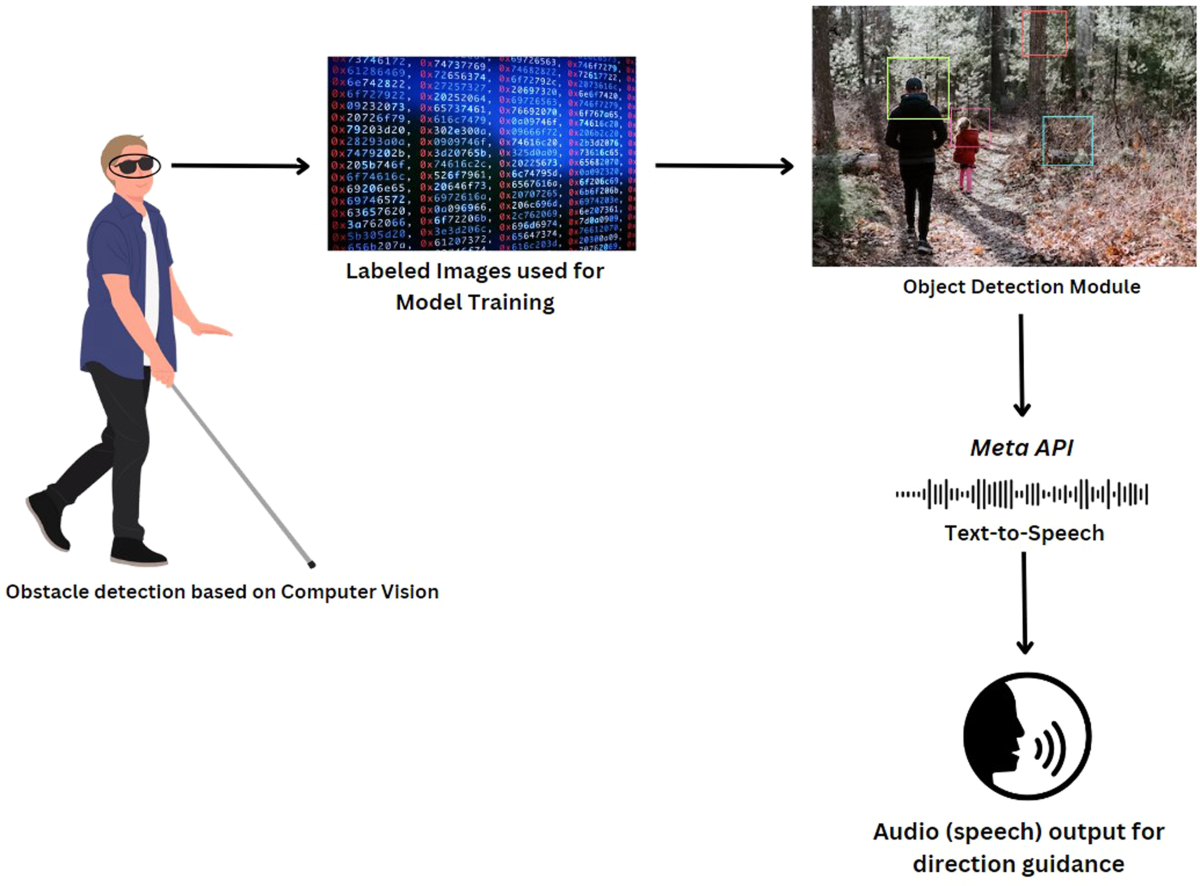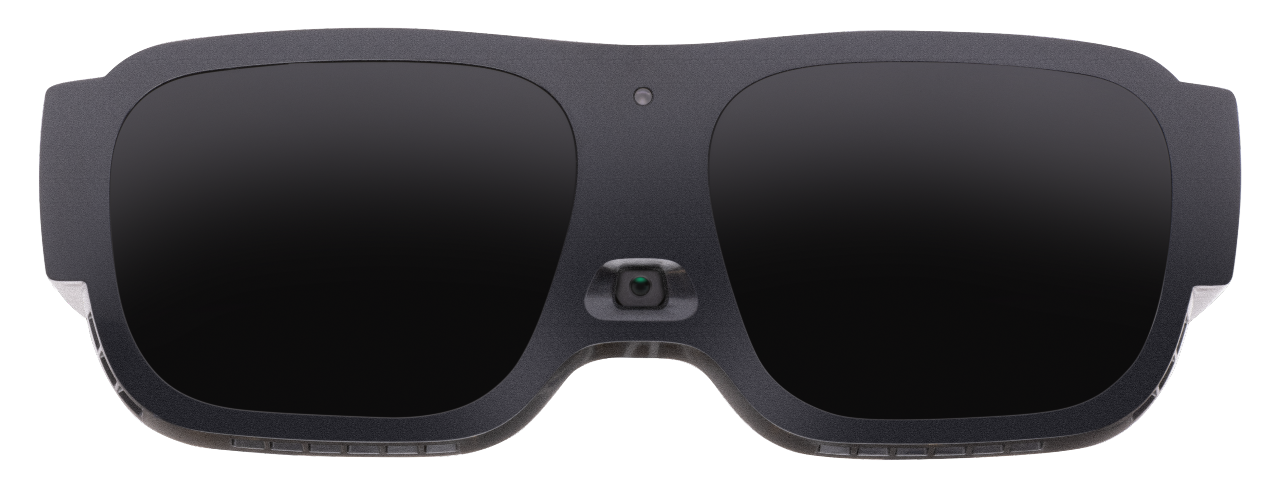Discover Advanced Assistive Instruments for Individuals With Visual Disabilities
The landscape of assistive modern technology for individuals with visual impairments is evolving rapidly, offering a variety of innovative gadgets that improve autonomy and interaction. From clever glasses that seamlessly merge visual input with auditory support to innovative navigating applications that redefine spatial understanding, these tools are improving opportunities.
Smart Glasses Innovations
Smart glasses stand for a considerable development in assistive innovation for people with visual disabilities. These innovative devices integrate different features made to improve the individual's interaction with their environment. Furnished with cams and sensing units, smart glasses can capture real-time aesthetic information, which is then processed and shared to the individual with audio feedback or haptic feelings. This functionality permits individuals to obtain instant descriptions of their environments, enhancing their ability to browse and involve with the world.
Additionally, improvements in expert system have actually even more enhanced the abilities of wise glasses. Machine learning formulas can acknowledge faces, reviewed message, and identify objects, making them very useful tools for everyday jobs. Users can receive auditory signs that provide context regarding their environment, cultivating self-reliance and confidence.
Additionally, the ergonomic layout and lightweight nature of numerous smart glasses make them appropriate for extended usage, ensuring comfort while improving functionality. As these gadgets proceed to evolve, they hold the potential to reinvent the means individuals with visual disabilities experience their every day lives, connecting the space in between ease of access and technology. The continuous r & d in this area pledge to increase the opportunities for clever glasses, making them a crucial component of modern assistive devices.
Navigation Apps and Tools
Various navigation apps and devices have actually become vital resources for individuals with visual impairments, considerably enhancing their capability to go across unfamiliar settings. These modern technologies leverage GPS functionality, audio cues, and real-time information to give customers with precise navigating aid.
One popular instance is the Aira app, which connects individuals to experienced agents that can supply aesthetic descriptions of environments and navigation assistance with a real-time video feed. This solution enhances the customer's spatial recognition and confidence while navigating. An additional significant tool is Seeing Eye GPS, which provides voice-guided navigating and factors of rate of interest, enabling customers to accessibility important info about their environments.

As modern technology proceeds to development, the advancement of a lot more innovative navigation tools guarantees to more empower people with aesthetic problems, promoting smooth movement and integration right into varied settings. Such advancements are important in advertising a more inclusive culture.
Braille Innovation Improvements
Over the last few years, improvements in Braille technology have actually dramatically changed how individuals with visual disabilities gain access to details and involve with the globe around them. The advancement of portable Braille displays has transformed reading by enabling individuals to link wirelessly to tablet computers, smart devices, and computer systems. These gadgets convert text into Braille in real-time, making it possible for seamless communication with electronic web content.
In addition, innovative Braille printers have emerged, boosting the manufacturing of tactile materials. Modern embossers are faster and extra reliable, enabling the fast development optometrist description of Braille files and academic materials. This efficiency lowers the moment and price connected with producing Braille sources, making them a lot more available to institutions and organizations.
In addition, the combination of Braille with other modern technologies, such as synthetic knowledge and artificial intelligence, has opened up brand-new avenues for personalized understanding experiences. Voice recognition and synthesis innovations can match Braille, providing a comprehensive technique to information dissemination.
As the demand for inclusive education and learning and work environment environments grows, these technical improvements play an essential duty in encouraging people with aesthetic disabilities, guaranteeing they have equivalent access to info and opportunities in numerous elements of life.
Wearable Devices for Freedom
An expanding selection visit of wearable gadgets is boosting freedom for people with aesthetic disabilities, supplying innovative options that improve navigating and day-to-day living. Braille displays and notetakers. These devices make use of innovative innovations to give real-time feedback and assistance, advertising autonomy in different settings

Wearable technology additionally includes smartwatches that can be set with accessibility attributes, enabling individuals to obtain alerts, track their locations, and even require aid with the touch of a button. Moreover, some gadgets include artificial intelligence to analyze the atmosphere, offering sound descriptions of close-by objects or people.
Voice-Activated Assistive Solutions
Leveraging voice-activated assistive services has actually changed the landscape of assistance for people with aesthetic impairments, offering hands-free communication and accessibility to a selection of jobs. These technologies utilize natural language processing and artificial intelligence to allow individuals to do day-to-day tasks through easy voice commands.

Moreover, recent innovations in voice acknowledgment accuracy have improved the customer experience significantly, fitting diverse accents and speech patterns. This inclusivity makes certain that even more people can gain from these modern technologies, cultivating a higher feeling of autonomy.
Conclusion
To conclude, the advancement of sophisticated assistive gadgets substantially boosts the freedom and quality of life for people with aesthetic disabilities. Innovations such as clever glasses, navigating apps, Braille technology, wearable devices, and voice-activated services collectively foster an even more comprehensive setting. These modern technologies equip individuals to browse their surroundings with self-confidence and engage more totally with the world, inevitably advertising higher ease of access and level playing fields for people dealing with visual difficulties.
The landscape of assistive technology for individuals with aesthetic impairments is progressing swiftly, presenting an array of ingenious devices that boost freedom and involvement.Smart glasses stand for a considerable advancement in assistive modern technology for people with visual problems. As these gadgets continue to evolve, they hold the prospective to reinvent the method individuals with aesthetic impairments experience their day-to-day lives, connecting the gap in between accessibility and innovation.In recent years, developments in Braille technology have actually considerably transformed just how people with aesthetic disabilities accessibility details and engage with the globe around them. These innovations encourage individuals to navigate their surroundings with self-confidence and engage even more totally with the world, eventually advertising better ease of access and equal opportunities for people dealing with aesthetic challenges.